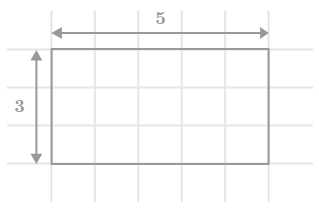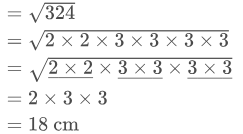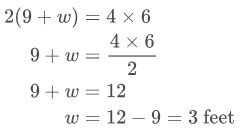Class 6: Mathematics
-
Chapter 1: Knowing Our Numbers5 Topics|2 Quizzes
-
Session 1: International Number System and Indian Number System - Definition, Chart, Interactives and Examples
-
Session 2: Comparing and Ordering Numbers - Steps and Examples
-
Session 3: Estimation of Numbers (Rounding Off Method) - Rules, Steps and Examples
-
Session 4: Roman Numerals - Definition, Rules, Chart, Conversion and Examples
-
NCERT Flip Book (Chapter 1: Knowing Our Numbers)
-
Session 1: International Number System and Indian Number System - Definition, Chart, Interactives and Examples
-
Chapter 2: Whole Numbers5 Topics
-
Session 1: What are Whole Numbers? - Definition, Symbol, Comparison and Examples
-
Session 2: Addition and Subtraction of Whole Numbers - Properties and Examples
-
Session 3: Multiplication and Division of Whole Numbers - Division Algorithm, Properties and Examples
-
Session 4: Patterns in Whole Numbers - Definition, Types and Examples
-
NCERT Flip Book (Chapter 2: Whole Numbers)
-
Session 1: What are Whole Numbers? - Definition, Symbol, Comparison and Examples
-
Chapter 3: Playing With Numbers8 Topics
-
Session 1: What is a Factor? - Properties, Methods, Interactives and Examples
-
Session 2: What is a Multiple? - Definition, Properties, Interactives and Examples
-
Session 3: Prime Numbers and Composite Numbers - Sieve of Eratosthenes, Definition, List, Facts and Examples
-
Session 4: Prime Factorisation - Definition, Methods, Steps and Examples
-
Session 5: Divisibility Rules for 2, 3, 4, 5, 6, 8, 9, 10 and 11 - Properties, Chart and Examples
-
Session 6: Highest Common Factor (H.C.F.) - Definition, Methods, Steps, Interactives and Examples
-
Session 7: Lowest Common Multiple (L.C.M.) - Definition, Methods, Steps, Interactives and Examples
-
NCERT Flip Book (Chapter 3: Playing With Numbers)
-
Session 1: What is a Factor? - Properties, Methods, Interactives and Examples
-
Chapter 4: Integers5 Topics
-
Session 1: What are Integers? - Definition, Symbol, Number line, Absolute Value and Examples
-
Session 2: Comparing and Ordering Integers - Rules and Examples
-
Session 3: Addition of Integers - Steps, Rules, Number Line, Interactives and Examples
-
Session 4: Subtraction of Integers - Steps, Rules, Properties, Number Line, Interactives and Examples
-
NCERT Flip Book (Chapter 4: Integers)
-
Session 1: What are Integers? - Definition, Symbol, Number line, Absolute Value and Examples
-
Chapter 5: Fractions6 Topics
-
Session 1: What are Fractions? - Definition, Representation, Number line, Interactives and Examples
-
Session 2: Types of Fractions - Definition, Interactives and Examples
-
Session 3: Comparing and Ordering Fractions - Methods, Interactives and Examples
-
Session 4: Adding Fractions (Like and Unlike Denominators) - Steps, Interactives and Examples
-
Session 5: Subtracting Fractions - (Like and Unlike Denominators) - Steps, Interactives and Examples
-
NCERT Flip Book (Chapter 5: Fractions)
-
Session 1: What are Fractions? - Definition, Representation, Number line, Interactives and Examples
-
Chapter 6: Decimals11 Topics
-
Session 1: What are Decimals? - Definition, Place Value Chart, Expansion, Types, Conversion and Interactives
-
Session 2: Decimal Fraction - Definition, Types, Conversion, Steps, Interactive and Examples
-
Session 3: Comparing Decimals - Steps, Interactive and Examples
-
Session 4: Uses of Decimal Notation - Conversion Chart and Examples
-
Session 5: Adding Decimals - Steps, Interactive and Examples
-
Session 6: Subtracting Decimals - Steps, Interactive and Examples
-
Session 7: Length Conversion - Metric Units and Customary Units
-
Session 8: Mass (Weight) Conversion - Metric Units and Customary Units
-
Session 9: Capacity Conversion - Metric Units and Customary Units
-
Session 10: Temperature Conversion - Metric Units and Customary Units
-
NCERT Flip Book (Chapter 6: Decimals)
-
Session 1: What are Decimals? - Definition, Place Value Chart, Expansion, Types, Conversion and Interactives
-
Chapter 7: Algebra3 Topics
-
Chapter 8: Ratio, Proportion and Unitary Method3 Topics
-
Chapter 9: Understanding Elementary Shapes2 Topics
-
Chapter 10: Basic Geometrical Ideas7 Topics
-
Session 1: What is Geometry? - Points, Lines, Planes and Solids
-
Session 2: Angles - Definition, Types, Interactives and Examples
-
Session 3: Polygons and Curves - Definition, Types, Interactives and Examples
-
Session 4: Triangles - Definition, Types, Interactives and Examples
-
Session 5: Quadrilaterals - Definition, Types, Properties, Interactives and Examples
-
Session 6: Circles - Definition, Formulae, Interactives and Examples
-
Session 7: What are Parallel Lines? - Transversal, Properties, Angles, Interactives and Examples
-
Session 1: What is Geometry? - Points, Lines, Planes and Solids
-
Chapter 11: Mensuration8 Topics
-
Session 1: Perimeter of Rectangle - Formula, Definition, Interactive and Examples
-
Session 2: Perimeter of Square - Formula, Definition, Interactive and Examples
-
Session 3: Perimeter of Triangle - Formula, Definition, Interactives and Examples
-
Session 4: Area of Rectangle - Formula, Definition, Interactive and Examples
-
Session 5: Area of Square - Formula, Definition, Interactives and Examples
-
Session 6: Area of Triangle - Formula, Definition, Interactives and Examples
-
Session 7: Area of Composite Shapes - Definition, Formula, Interactives and Examples
-
Session 8: Area of Irregular Shapes Using Squared Paper - Definition, Interactives and Examples
-
Session 1: Perimeter of Rectangle - Formula, Definition, Interactive and Examples
-
Chapter 12: Symmetry2 Topics
-
Chapter 13: Data Handling3 Topics
-
Chapter 14: Practical Geometry5 Topics
-
Session 1: Construction of Line Segments - Methods, Steps and Interactives
-
Session 2: Construction of Perpendicular Lines (Perpendicular Bisector) - Steps and Interactives
-
Session 3: Construction of Circles - Steps, Interactives and Examples
-
Session 4: Construction of Angles - Steps and Interactives
-
Session 5: Construction of Some Standard Angles (30°, 45°, 60°, 90°, 120° and 135°) - Steps and Examples
-
Session 1: Construction of Line Segments - Methods, Steps and Interactives
-
NCERT AND EXEMPLAR
Number System1 Topic -
Geometry1 Topic
-
Integers1 Topic
-
Fractions & Decimals1 Topic
-
Data Handling1 Topic
-
Mensuration1 Topic
-
Algebra1 Topic
-
Ratio & Proportion1 Topic
-
Symmetry & Practical Geometry1 Topic
Revolutionary SSC Bot: Unleashing Unmatched Efficiency and Precision
The SSC Bot is an advanced artificial intelligence-powered assistant designed to serve as a comprehensive guide for customers. It utilizes cutting-edge AI technology and natural language processing capabilities to understand and respond to customer queries effectively. With personalized assistance, 24/7 availability, and multilingual support, the SSC Bot ensures a seamless and efficient interaction for customers. It also possesses an extensive knowledge base, assists in troubleshooting and issue resolution, and seamlessly integrates with various platforms.
₹100.00Original price was: ₹100.00.₹49.00Current price is: ₹49.00.
Session 5: Area of Square – Formula, Definition, Interactives and Examples
Admin 17/11/2024
What is Area?
The area is the amount of surface enclosed by a closed two-dimensional figure. It is measured by the number of unit squares it takes to cover a two-dimensional shape. For example, if you count the small squares, you will find there are 15 of them. Therefore, the area is 3⋅5 or 15 unit2.

Area of Square
A square is a plane figure whose all four sides are of equal lengths. The area of a square is the number of unit squares it takes to cover a square. Since all the sides of a square are equal, its area is the product of its two sides.
Formula for Area of Square
We know that a square is a rectangle whose base and height are equal.

Areasquare=side×side

Area of Square – Examples
Example 1
Find the area of square whose side is 15 units.
We know,
Area of square = side × side
=15×15
=225 units2
Example 2
Find the side length of a square of area 324 cm2.
We know,
Area of square = side × side
∴ side of the square=\(\sqrt{Area of square}\)

Example 3
The floor of a big room is in the shape of a rectangle of length 4 m and breadth 2.5 m. The floor is to be covered by square tiles each of side 20 cm. Find the number of tiles required.
The length of the rectangular room = 4 m = 400 cm.
The breadth of the rectangular room = 2.5 cm = 250 cm.
∴ Area of the rectangular room = length ×breadth
=(400×250) cm2
The side length of each square tile = 20 cm.
∴ Area of the square tile = side × side
=(20×20) cm2
∴ Number of tiles required=\(\frac{Area of the floor of the room}{Area of each tile}\)

Example 4
Allen bought a new house and planned to replace the carpet in two bedrooms. One bedroom is in the shape of a square, and the other is rectangular. The square bedroom has side lengths of 6 m, and the rectangular bedroom has a length of 11 m and a width of 5 m. Find out how much carpet is needed to cover both bedroom floors. Also, find the cost of the carpeting at the rate of ₹75 /m2.
For Allen to figure out how much carpet he needs to buy for these two bedrooms, he needs to find the sum of each bedroom area.
His square bedroom has side lengths of 6 m.
∴ Area of the square bedroom = side × side
=6×6=36 m2
The other room is a rectangle with dimensions of 11 m by 5 m.
∴ Area of the rectangular bedroom = length × width
=11×5=55 m2
Allen wants to know the total area of his bedroom to know how much carpet to buy, so add the two areas together.
Total area =36+55=91 m2
Rate of carpeting = ₹75 /m2
∴ Total cost of carpeting = Total area × Rate of carpeting
=91×75
=₹6825
Example 5
The perimeter of a rectangle is equal to the perimeter of a square. If the side of the square is 6 feet and the length of the rectangle is 9 feet, then find the ratio of the area of the square and the rectangle.
The side of the square = 6 feet
The length of the rectangle = 9 feet
Let the width of the rectangle be w feet.
Since the perimeter of the rectangle is equal to the perimeter of the square,

Then,
Areasquare:Arearectangle=6×6:9×3
=36:27
=4:3
Example 6
From a square sheet of paper of side 14 cm, a strip of width 3 cm is removed along the border. Find the area of the removed strip of paper.
Side of the outer square sheet = 14 cm.
Width of the strip = 3 cm.
Side of the inner square sheet =14−2(3)=14−6=8 cm
Area of the outer square =14×14=196 cm2
Area of the inner square =8×8=64 cm2
Area of the removed strip = Area of the outer square − Area of the inner square
=196−64
=132 cm2
Remember this!
- The area is the amount of surface enclosed by a closed two-dimensional figure.
- The formula for the area of a square is:
Areasquare=side×side



